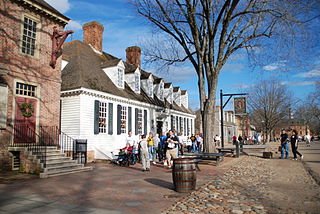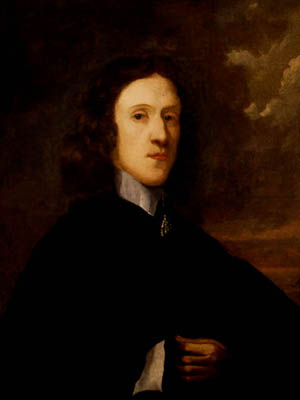
Colonial Williamsburg is a living-history museum and private foundation presenting a part of the historic district in the city of Williamsburg, Virginia. Its 301-acre (122 ha) historic area includes several hundred restored or recreated buildings from the 18th century, when the city was the capital of the Colony of Virginia; 17th-century, 19th-century, and Colonial Revival structures; and more recent reconstructions. The historic area includes three main thoroughfares and their connecting side streets that attempt to suggest the atmosphere and the circumstances of 18th-century Americans. Costumed employees work and dress as people did in the era, sometimes using colonial grammar and diction.


The Capitol at Williamsburg, Virginia housed both Houses of the Virginia General Assembly, the Council of State and the House of Burgesses of the Colony of Virginia from 1705, when the capital was relocated there from Jamestown, until 1780, when the capital was relocated to Richmond. Two capitol buildings served the colony on the same site: the first from 1705 until its destruction by fire in 1747; the second from 1753 to 1780.

Carter's Grove, also known as Carter's Grove Plantation, is a 750-acre (300 ha) plantation located on the north shore of the James River in the Grove Community of southeastern James City County in the Virginia Peninsula area of the Hampton Roads region of Virginia in the United States.
Thomas Everard (1719–1781) served as mayor of Williamsburg, Virginia from 1766 to 1767. He was a clerk at the House of Burgesses and lived in the Brush-Everard House in Colonial Williamsburg. He supported the fight for independence from the British Empire, including serving on the committee that selected delegates from Virginia for the Continental Congress.

Rosewell Plantation in Gloucester County, Virginia, was for more than 100 years the home of a branch of the Page family, one of the First Families of Virginia. Begun in 1725, the Flemish bond brick Rosewell mansion overlooking the York River was one of the most elaborate homes in the American colonies.

The Raleigh Tavern was a tavern in Williamsburg, Virginia, and was one of the largest taverns in colonial Virginia. It gained some fame in the pre-American Revolutionary War Colony of Virginia as a gathering place for legislators after several Royal Governors officially dissolved the House of Burgesses, the elected legislative body, when their actions did not suit the Crown. It was also the site of the founding of the Phi Beta Kappa Society on December 5, 1776.

Col. Archibald Cary was a Virginia planter, soldier, politician, and major landowner. He was a political figure from the colony of Virginia.

Colonel John Page was a planter, slave trader, merchant and politician in colonial Virginia. Born in East Bedfont, Middlesex, Page eventually migrated to the colony of Virginia, where he lived in Middle Plantation and served as a member of the House of Burgesses from 1665 to 1677 and a member of the Virginia Governor's Council from 1677 to 1692. A wealthy landowner, Page donated land and funds towards construction of the Bruton Parish Church. Page was also involved in the establishment of the College of William & Mary in 1693, as well as being a chief proponent of Middle Plantation being designated the colony's capital in 1698.

The history of Williamsburg, Virginia dates to the 17th Century. First named Middle Plantation, it changed its name to Williamsburg in 1699.

The Wythe House is a historic house on the Palace Green in Colonial Williamsburg, in Williamsburg, Virginia, USA. Built in the 1750s, it was the home of George Wythe, signer of the Declaration of Independence and father of American jurisprudence. The property was declared a National Historic Landmark on April 15, 1970.

Umbria Plantation, also known as the Samuel Pickens Plantation, was a historic cotton plantation and Greek Revival-style plantation house near what is now Sawyerville, Alabama. The plantation was established by Samuel Pickens, the younger brother of Alabama's third governor, Israel Pickens. The house was an unusual example of a raised basement plantation house built on a U-shaped plan. It was recorded by the Historic American Buildings Survey during the 1930s. It was destroyed in a fire in the early 1970s.

John Calvin Wilson House is a historic home located near Indiantown, Williamsburg County, South Carolina. It was built about 1847, and is a two-story, five bay, frame central-hall plan I-house. It features a shed roofed, one-story "Carolina" or "rain porch" supported by four stuccoed brick columns. A one-story frame rear wing was added in 1939. John Calvin Wilson was a politician and a successful planter. He died at Richmond, Virginia of complications from a thigh wound sustained in the Battle of Cold Harbor.

William Dering was an American dancing master and painter active primarily in Virginia. Very little is known about his life or career; what few details have been established are known primarily from newspaper advertisements, court records, journal entries, and ledgers and from his few surviving paintings.
Henry Cary Jr. was an American planter and building contractor, active during the early 1700s.
John Blair was a merchant and politician of the colony of Virginia. He served in both houses of the Virginia General Assembly. As a member of the House of Burgesses, he initially represented Jamestown then Williamsburg, before being appointed to the Governor's Council. There he served for more than 25 years, including four times becoming acting governor during changes of the royal governors and while governor Francis Fauquier was in the New York and Georgia colonies. Nonetheless, this John Blair, the earliest of the four men of the name serving in the Virginia General Assembly, may be best known either as the nephew and heir of Rev. James Blair or father of John Blair, Jr..

The President's House is the residence of the President of the College of William and Mary in Virginia in Williamsburg, Virginia. Constructed in 1732, the building still serves its original purpose and is among the oldest buildings in Virginia. Since its construction only one of the college's presidents, Robert Saunders Jr., has not moved into the building, which is let for free to the president. The President's House is the College's third-oldest building and the oldest official college presidential residence in the United States.
Rachel Warrington was a woman who became embroiled in a scandal, bearing a son, Lewis, probably fathered by Donatien-Marie-Joseph de Vimeur, vicomte de Rochambeau in late eighteenth century Colonial Williamsburg and Yorktown, Virginia. There is an alternate theory that Louis-François-Bertrand du Pont d'Aubevoye de Lauberdière was Lewis's father. Rachel and her sister Camilla had been taken in by their aunt and uncle, Suzannah and Dr. George Riddell; both men lived in the Riddell household during the winter of 1781–1782..
Elizabeth Bray Allen also known as Elizabeth Bray Allen Smith Stith operated a large plantation after the death of her first husband, Arthur Allen. After the death of her second husband, she operated both the Allen and Smith estates. She provided the direction and funds to establish a free school for poor boys and girls in Smithfield, Virginia.















